Best (and Worst) Practices for Your Welcome Emails
You undoubtedly know you should have a welcome series, but you may not know what it entails. However, welcome emails are exactly what they sound like: communications delivered to new customers and subscribers with the goal of introducing them to your company. These emails inform users to the prospects available via your company.
A welcome email or series of emails often provides subscribers with an overview of the brand, the narrative behind the firm, and what the brand has to offer them. You only have one chance to create a first impression, so why not make it count?
With the correct welcome email, this process may be completed fast, and we’ll show you some excellent examples below. But first, consider how powerful these emails may be.
What is the effectiveness of welcome emails?
Welcome emails are incredibly successful not just for making customers feel valued, but they also automatically increase subscriber engagement.
Welcome emails have a 91.43% open rate, which is four times the open rate and five times the average click-through rate of a conventional email marketing campaign.
Before we go into what to include in your welcome email, you need think about when you’ll send it to subscribers.
When it comes to welcome emails, the sooner the better:
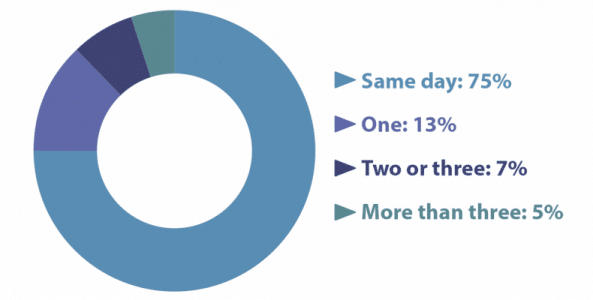
According to Return Path, 75% of marketers send welcome emails on the same day users sign up. New leads are most engaged during the first 48 hours after subscribing, making timely welcome emails critical to campaign success.
What should you put in your welcome email?
Personalization and unique offers are excellent for creating successful welcome emails. Let’s take a look at what marketers could add in welcome emails to get favorable effects.
A captivating topic line
Before a subscriber even clicks on a brand’s welcome email, the subject line will catch their attention.
When creating welcome email subject lines, businesses should make their purpose obvious. This may be accomplished by including a “welcome” message in the headline as well as an attention-grabbing feature.
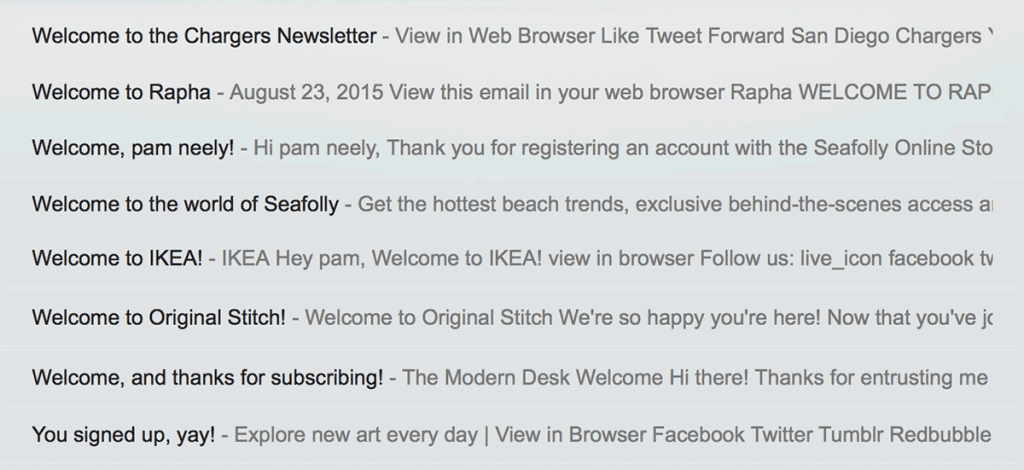
A heartfelt hello
A nice welcome entails more than just saying hello.
When a new user subscribes to your brand, they offer you with information such as their name or the nature of their company. Welcome new subscribers by name and, if feasible, classify them into a special list so you can deliver them the most relevant information.
Readers are 25% more likely to open emails with customized welcomes.
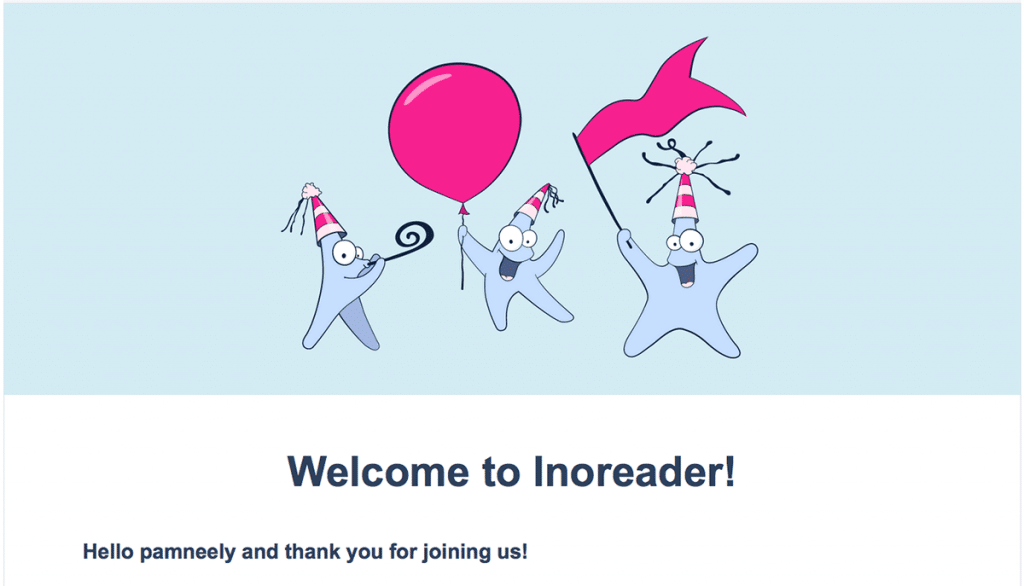
Give your customers something to do
After you’ve welcomed them to your brand, you should provide them with a related activity.
This may be accomplished in a number of ways.
- Provide subscribers with some recent content from your blog. This can be something that relates to their preferences (e.g. gated content) or currently trending industry news.
- Ask subscribers to add your brand to their “safe senders” email list, so you don’t end up in the spam folder.
- Ask your readers to provide more information about themselves. Does your preference center allow users to personalize their interests? Provide a link so they can edit their profile, then send emails based on their needs.
- Give your readers links to your social accounts so they can share your content with their friends. This also gives them another direct way to contact you.
Promotional offers
A welcome email is a great way to thank new subscribers for joining your list and supporting your company. Promo codes and discounts demonstrate to customers not just that you want them to stay, but also that you value their time.
Michaels’ welcome email acknowledges new members and gives a 20% discount voucher. Furthermore, the marketing encourages consumers to personalize their purchasing site.
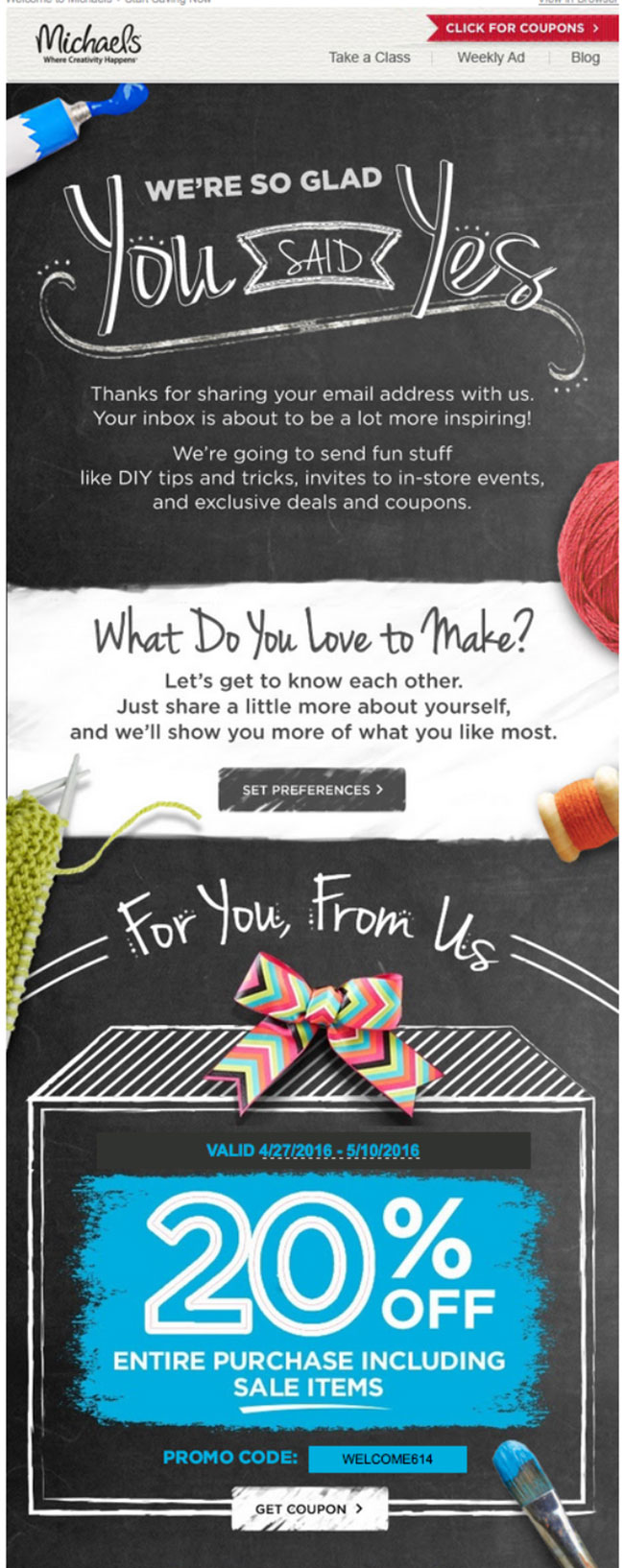
Unsubscribe links are included in very good emails
Many marketers are terrified of their email list dwindling, particularly if they have just gotten a fresh lead.
While you may not want to consider consumers unsubscribing from your welcome email, it is essential by law to enable them to opt-out at any moment.
While you may not want to consider consumers unsubscribing within their welcome email, it is essential by law to enable them to opt-out at any time and in a simple manner.
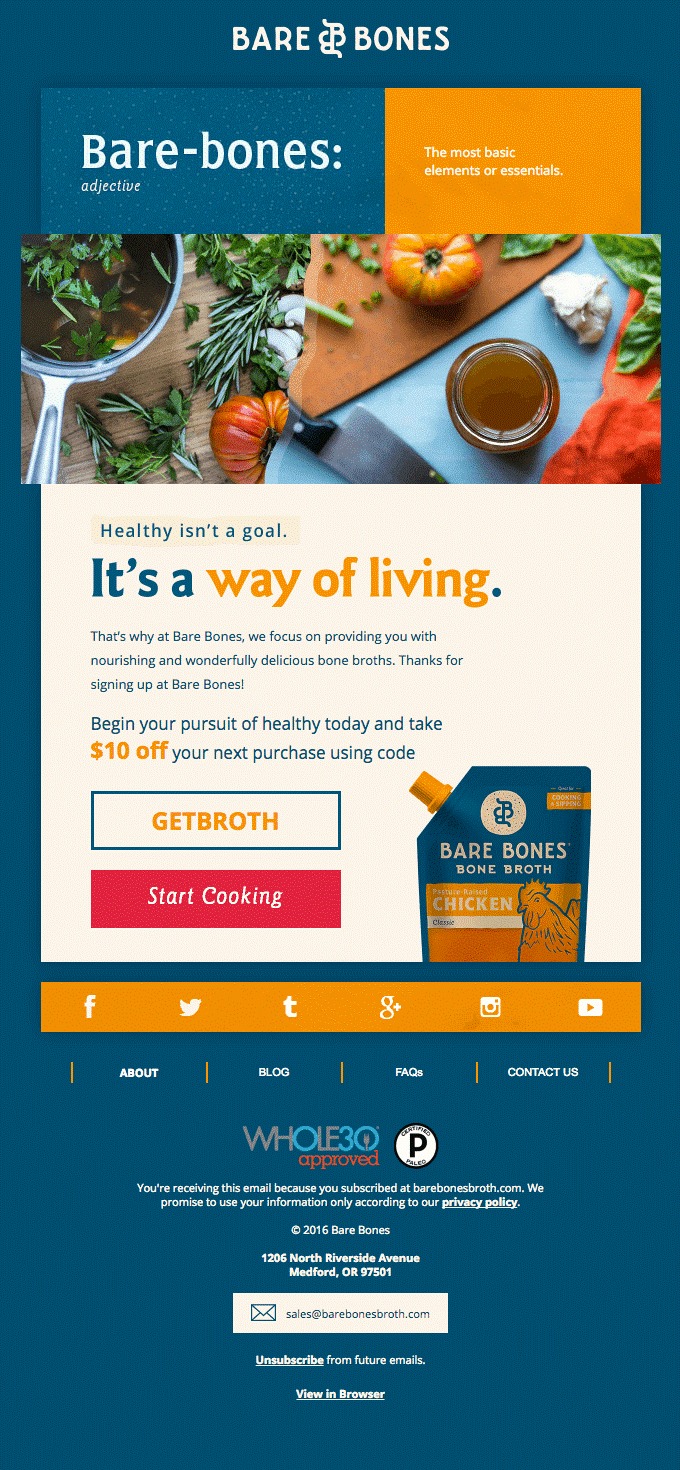
What not to include in a welcome email
Understanding what to include in a welcome email is critical, but so is understanding what not to include. Consider why you flagged other companies’ emails as spam. Why wouldn’t you, as a marketer, learn from your customers?
Keep in mind the methods that didn’t work for you as we discuss some of the worst things a company can do with welcome emails.
Don’t be robotic
Yes, many email campaigns are operated by some kind of automated mechanism, but that doesn’t imply your email should seem like it was written by a robot. Don’t use the same generic email template to send to everyone.
Simply include your subscriber’s name in an email is a smart place to start, but why stop there?
Another option to tailor a welcome email is to provide relevant goods comparable to what subscribers have previously seen on your site. Recommending further items or services based on earlier purchases is also acceptable.
Make no demands on your subscribers
While you may want to recommend that customers try particular goods or read certain blog pieces, you should never demand anything from them.
This may seem little, but the more you require of your subscribers, even if you don’t intend it as a demand, the more turned off they may get.
Remember that the ultimate purpose of your welcome email is to demonstrate to the customer that you care about them and want to supply them with a product or service that meets their requirements. In other words, you care about people, not just money.
Don’t bombard your readers with too many or irrelevant emails
Sending too many emails is one of the most serious email marketing blunders a company can make. Another is delivering the reader irrelevant stuff.
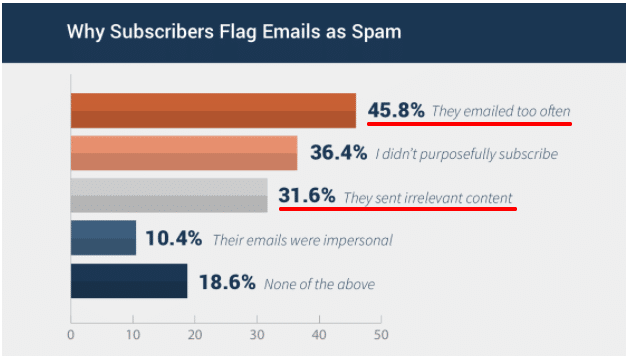
A welcome series is a wonderful approach to learn what your subscribers desire since one person’s “too frequent” is another person’s “insufficiently frequent.”
Include a preference center where your subscribers can tell you precisely what kind of information they want to receive and how often. You’ll remove the uncertainty from your plan and ensure you’re constantly providing the optimal experience to every inbox.
Remember, you don’t want to overburden them, but you also don’t want to bore them.
Conclusion
A welcome email is a great way to welcome new subscribers to your business while also directing them to the most relevant information or product you have to offer. Include the following in your welcome email to make it effective:
A captivating topic line
A heartfelt hello
A service for the consumer
An opportunity to unsubscribe
When subscribers supply you with their contact information, they want you to offer them with significant advantages and to treat them as people. This is why, while sending out welcome emails, you should seem professional while yet being approachable.
Above all, send the kind of email you’d want to receive.






Recent Comments